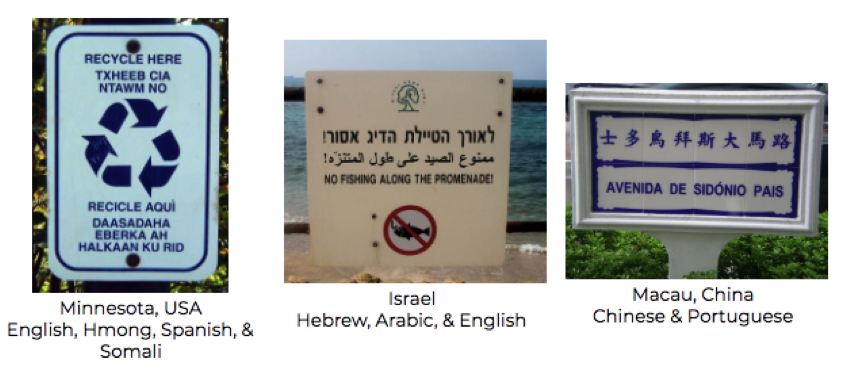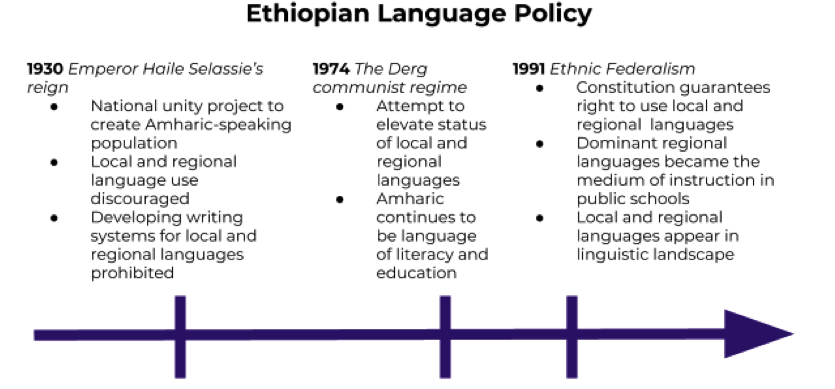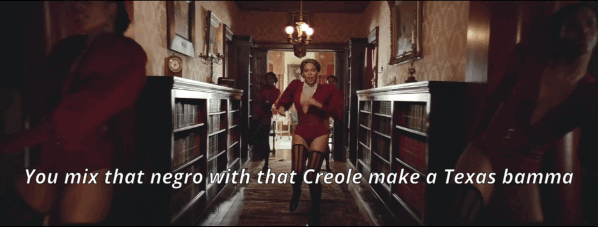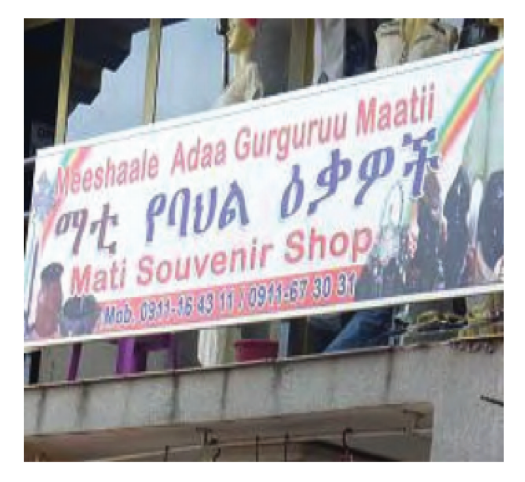Language contact, agency and power in the linguistic landscape of two regional capitals in Ethiopia
Do you ever wish that your linguistics interests were more Instagram-friendly? Fear not, m’lady. There’s a subfield for you! Linguistic landscape is a burgeoning area of study that analyzes how language is used visually in public spaces (mostly signs) in multilingual societies. Very ‘grammable.
 Source: https://en.wikipedia.org/wiki/Linguistic_landscape
Source: https://en.wikipedia.org/wiki/Linguistic_landscape
Linguistic landscape speaks to the political, economic, and cultural power of the given languages in multilingual places. Which languages appear on which kind of signs? Which language is more prominent? Which one has an uglier font (cough…Comic Sans… cough)? Some linguistic landscapes are a byproduct of language policy, like in Quebec, where signs must have French text “markedly predominant” over text in other languages. Other times linguistic landscape develops more organically, like the examples we will be looking at in just a minute.
In their paper (2014) Hirut Woldemariam and Elizabeth Lanza explore the linguistic landscape of two regions in Ethiopia to reveal the effects of language policy and how the regionals languages have affected each other. This paper has everything: #linguisticlandscape, #languagecontact, #literacy, #languagepolicy, #languagerights.

Language Policy and Literacy in Ethiopia
Let’s get you up to speed on Ethiopia. Ethiopia is in the Horn of Africa and they have been doing their thing for a while. Lucy, our earliest human ancestor, was found there! When Europe was carving up Africa, Ethiopia successfully fought off the Italians making it the only uncolonized African country, the real Wakanda.

It is an ethnic federation with more than 100 million people using 80 different languages. The three we are going to talk about today are Amharic, Oromo, and Tigrinya.
- Amharic is the federal language and the language of the Amhara people (27% of the population), one of the most powerful ethnic groups in Ethiopia. Amharic serves as the lingua franca for the country.
- Oromo is a Cushitic language spoken by the Oromo people (35% of the population). It is the official working language in the region of Oromia, and is spoken by some people across the border in Kenya.
- Tigrinya is the language of the Tigray region and people (6% of the population), and is also a major language of neighboring frenemy, Eritrea.
Here is a quick look at the trajectory of language policy in Ethiopia:

Long story short, the history of Amharic as the primary language of literacy, instruction, and government administration has unfairly positioned speakers of other languages in their own country even when, as in the Oromo people, they outnumber the Amhara ruling class. Reliable, up-to-date literacy statistics are not available, but Woldemariam and Lanza cite some numbers published in 2009 that indicate literacy rates in Oromo-speaking regions and Tigrinya-speaking regions were between 1% and 15%.

The Paper
Almost thirty years after the dramatic language policy shift to uphold language rights and increase literacy in regional and local languages, the role of Amharic in Oromia and Tigray provides an interesting test case on the lingering chokehold it has had on written texts.
The researchers melded together fieldwork from a few different projects, so they could zero in on Amharic language contact with Oromo and Tigrinya. Language contact is when languages interact and influence each other- vocabulary, intonation, grammar rubbing off, languages replacing or ‘killing’ each other, or new languages developing through creolization.

Woldemariam and Lanza use linguistic landscape data collected came from the capital cities Adama, Oromia and Mekele, Tigray to demonstrate language contact. In Adama the dataset was 100 photos of monolingual, bilingual, and trilingual signs. In Mekele they chose the main shopping district and took photos of 376 written texts on signs, building names, and advertisements. Because names of shops are often noun phrases this is fertile ground to investigate language contact as born out in the linguistic landscape.
Tigrinya and Oromo both differ from Amharic in the word order of noun phrases. Amharic is right-headed and Tigrinya and Oromo are both left-headed. Unfortch, that refers to sentence diagramming gobbledygook and not a two-headed dragon with a dominant head.

Here is an example to help a bish out:

In addition to a lot of Amharic language in the linguistic landscape in general, Woldemariam and Lanza found evidence of Amharic word order in Tigrinya and Oromo language shop signs including some interesting hybrids with embedded noun phrases. Check it:

In the above image (p.94) from Adama, Oromia we can see Oromo, Amharic and English. The Oromo literally translates to Shop Cultural Objects Maatii. (Maatii is a name.) ‘Cultural Objects’ is a right-headed noun phrase embedded in the left-headed noun phrase ‘Shop Maatii.’ ‘Cultural Objects’ is following the word order conventions of Amharic even though the lexical items are Oromo. This is just one example of Oromo and Amharic hybrid syntax observed in the linguistic landscape. The same phenomenon was identified with embedded noun phrases in Tigrinya on shop signs in Meleke, Tigray.
The heavy presence of Amharic language and Amharic word order in Oromo and Tigrinya in the linguistic landscape speaks to its history and as the language of literacy in Ethiopia. This bish couldn’t help but wonder: what is the linguistic landscape around her and what does it say about language policy and power? Who is invited into the fold and who are the gatekeepers locking out?

This paper is recommended for linguistic landscape bishes, language policy nerds, language contact kweens, and Ethiopiaphiles.
Woldemariam, H., & Lanza, E. (2014). Language contact, agency and power in the linguistic landscape of two regional capitals in Ethiopia. International Journal of the Sociology of Language, 228, 79–103.